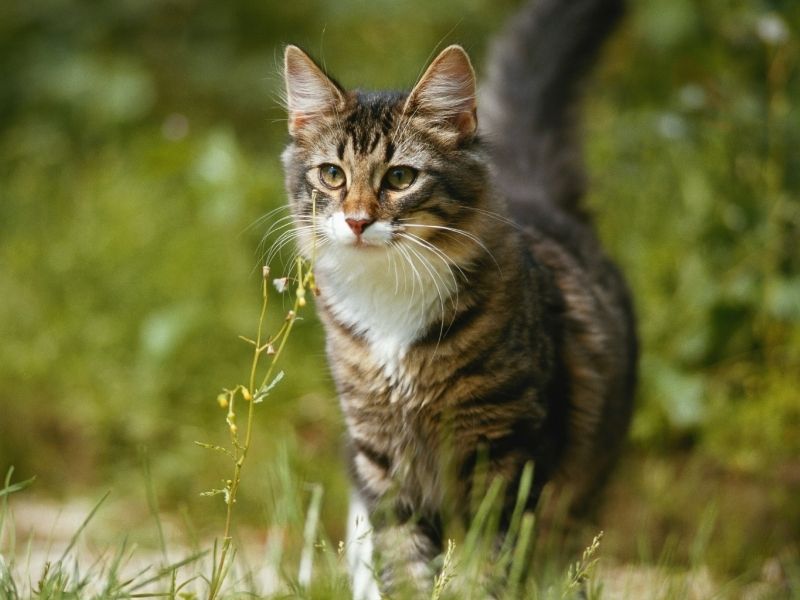Feline Leukemia
There are millions of cats around the world that contract many different illnesses. When one of our feline companions becomes ill, it can be scary. One of the more common illnesses is Feline infectious spermatosis, also known as the Feline Leukemia virus.
FeLV is a retrovirus belonging to the oncornavirus subfamily, meaning it is a cancer-causing virus. The virus can compromise the cat’s immune system and there is no known cure. Feline leukemia virus (FeLV) is a fatal infection that is spread by cat-to-cat contact through urine, feces, saliva, nasal secretions, and even a kitten can contract FeVL from nursing from an infected mother or even in the womb. Social behaviors like grooming and sharing food and water or litterboxes are the most common ways of transmission.
FeLV infection progresses very rapidly, so most cats that contract the virus die of the disease. If the disease is caught early enough some cats can fight it off with vet support therapy. The key is to catch it before the disease reaches the bone marrow. If the disease reaches the bone marrow, the cat will have the disease for the rest of its life. Once it has reached the bone marrow, the cat generally lives less than three years longer than its current age. Knowing how to keep your cat safe can help protect them from getting this illness.
Types of Cats That Are at Risk for Leukemia
Cats that go outside are at the greatest risk of contracting feline leukemia because outdoor cats tend to fight more. This would cause the disease to spread by a bite from an infected cat. Cats from shelters or cats that live in a multi-cat household are also more likely to contract FeVL. A cat that contracts FeLV can end up with many harmful issues or can even die. It can cause blood disorders, immune deficiencies, neoplasia (abnormal tissue growths) and is also one of the main causes of feline cancer.
Symptoms of Leukemia
There are some symptoms that can indicate your cat has contracted FeLV. These include decreased appetite, enlarged lymph nodes, fevers, pale gums, dull-looking coats, continual infections, weight loss, anemia, and diarrhea. This also puts cats at a higher risk of susceptibility to bacterial, fungal, and viral infections. On occasion, FeLV can cause neuropathy causing urinary incontinence or hind limb paralysis. A cat can spread the FeVL before it even begins to show signs or symptoms of the disease.
What Can Happen If a Cat Contracts FeLV
Once a cat contracts FeLV there are 3 things that can happen. The first being abortive infection and immunity, meaning the cat may experience a FeVL viral infection, the feline will fight off the virus and develop an immunity. The second is progressive infection and disease; the virus causes the cat to continue to become infected. The virus eventually moves to the bone marrow and compromises the immune system. The cat may show no signs of illness for years but will typically show within two to three years. This also allows the feline to spread to other felines. The third thing that can happen is regressive infection and immunity; the cat may have the infection without developing the disease. They usually become free of the disease in a few years. They are unlikely to spread FeLV.
There is some good news. Outside of the body, FeLV can only live for a few hours and can be easily destroyed with soap and water. There are also vaccinations available for our felines. Even though vaccines do exist they are not 100% effective but do assist in prevention. You should consider talking to your veterinarian about vaccinating your cat against FeLV even if they are indoor cats. Some indoor cats are sneaky and will get out when we don’t expect them to. They can also contact FeVL through saliva through a screen window. FeLV is a feline-only virus and can not be spread to humans or other non-feline pets. However, if your cat contracts the disease, you need to keep the infected feline away from other felines in your household. Make sure your other cats are vaccinated to be safe. Spaying and neutering are also key to preventing FeLV by minimizing biting behaviors.
Testing for Leukemia
Cats are usually tested for FeLV as kittens and at one of their first appointments with a vet. The test is called ELISA (enzyme-linked immunosorbent assay). This test provides a quick diagnosis with the result during the same visit. Best results come from a blood test rather than a saliva test. If the cat tests positive, this doesn’t mean it’s the final diagnosis. The vet will want to do further testing to be sure. If a feline has been exposed to FeLV but tests negative the cat will continue to be monitored and retested in 30 days. If the feline tests positive and the vet does more tests resulting in a positive final diagnosis, supportive care will be put in place. Ways to do this are minimizing stress, feeding them quality food, being prompt at first signs of illness, and keeping treatments up to date.
Keep your feline happy and healthy by visiting a vet regularly, keeping your pet up to date on vaccines, and noticing changes in your pet. Knowing a few simple facts could save your pet’s life. Call GreenTree Animal Hospital in Libertyville at 847-680-6543.

